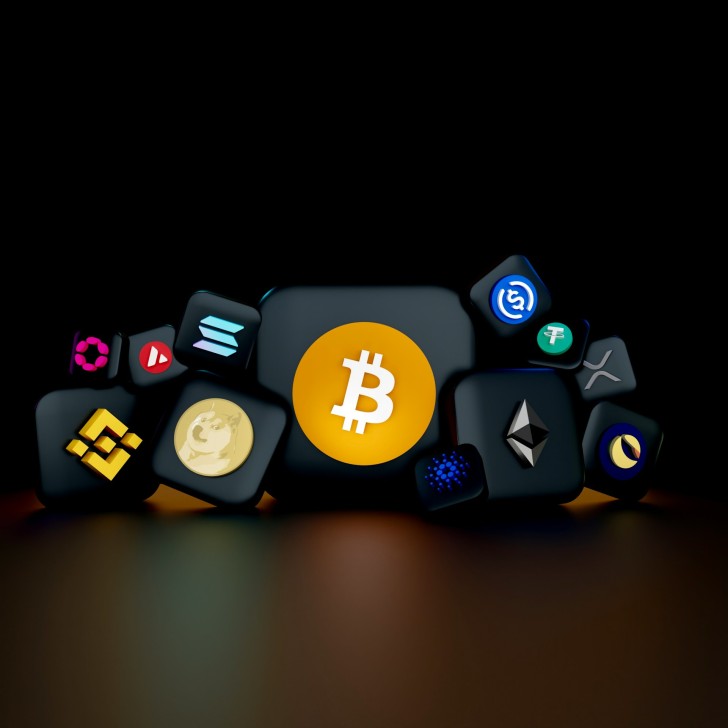- Ethereum: The Benchmark for Altcoins
- Solana: High-Speed Blockchain Innovation
- Cardano: A Research-Driven Blockchain
- Performance Comparison: Solana, Cardano, and Ethereum
- Key Factors Influencing Altcoin Performance
- Use Cases and Adoption Trends
- Investors looking at altcoins like Solana and Cardano should consider:
- Conclusion
Much like enthusiasts exploring new gaming strategies in the vortex game, crypto investors closely monitor market trends, performance metrics, and technological updates to make informed decisions about altcoins.
Ethereum: The Benchmark for Altcoins
Ethereum, often considered the gold standard for decentralised applications (dApps) and smart contracts, serves as a reference point for evaluating other blockchain networks:
- Smart Contract Dominance: Ethereum powers a majority of DeFi (Decentralised Finance) projects, NFT platforms, and decentralised applications.
- Ethereum 2.0 Upgrade: Transitioning to Proof-of-Stake (PoS) aims to reduce energy consumption by over 99% and improve scalability.
- Market Sentiment: ETH’s price movements often influence the entire altcoin market, making it a critical benchmark for investors.
With its well-established ecosystem, Ethereum sets the performance standards against which Solana and Cardano are evaluated.
Solana: High-Speed Blockchain Innovation
Solana has emerged as a top altcoin contender due to its focus on high throughput and low transaction costs:
- Scalability: Solana can process up to 65,000 transactions per second (TPS) using its Proof-of-History (PoH) consensus combined with Proof-of-Stake.
- DeFi and NFT Adoption: Platforms like Serum and Magic Eden leverage Solana’s speed, attracting a growing user base.
- Transaction Costs: Solana transactions cost a fraction of an Ethereum transaction, making it more attractive for micro-transactions and high-frequency trading.
Despite network outages in the past, Solana’s infrastructure innovation keeps it in the spotlight as a scalable alternative to Ethereum.
Cardano: A Research-Driven Blockchain
Cardano distinguishes itself with a scientific approach to blockchain development, focusing on security, sustainability, and formal verification:
- Proof-of-Stake Consensus: Cardano’s Ouroboros protocol emphasises energy efficiency and network security.
- Smart Contracts and DApps: With the Alonzo upgrade, Cardano supports smart contracts, gradually expanding its ecosystem.
- Community and Governance: Cardano emphasises decentralisation and community-driven development, appealing to long-term investors.
While Cardano’s transaction speed is lower than Solana’s, its research-backed development and energy-efficient PoS model attract environmentally conscious users and developers.
Performance Comparison: Solana, Cardano, and Ethereum
When evaluating Solana and Cardano against Ethereum, several factors are considered:
- Transaction Speed and Cost: ● Solana: ~65,000 TPS, extremely low fees. ● Cardano: ~250 TPS, moderate fees. ● Ethereum: ~30 TPS (Ethereum 1.0), higher gas fees, though PoS upgrades are improving scalability.
- Ecosystem Size: ● Ethereum hosts the largest number of dApps, DeFi platforms, and NFT projects. ● Solana is rapidly expanding its ecosystem, particularly in NFTs and gaming. ● Cardano is steadily growing, with a focus on formal verification and enterprise applications.
- Market Cap and Liquidity: ● Ethereum remains dominant, with significant liquidity and institutional adoption. ● Solana and Cardano rank among the top 10 cryptocurrencies, offering competitive investment opportunities.
Key Factors Influencing Altcoin Performance
Several factors determine how Solana and Cardano perform relative to Ethereum:
- Technological Innovations: Blockchain upgrades, network improvements, and scalability solutions influence investor confidence.
- Market Sentiment: Crypto market volatility and investor perception of growth potential directly impact price movements.
- Regulatory Environment: Global regulations on cryptocurrencies can create uncertainty or foster adoption.
- Partnerships and Integrations: Collaborations with enterprises, gaming platforms, and NFT marketplaces boost credibility and adoption.
Investors need to track these factors closely to understand potential short-term volatility and long-term growth prospects.
Use Cases and Adoption Trends
Solana Use Cases
- DeFi Platforms: Solana powers decentralised exchanges like Serum, offering fast and low-cost transactions.
- NFT Marketplaces: Magic Eden and other platforms have seen massive NFT trading volumes on Solana.
- Gaming Integration: Solana is gaining traction in blockchain gaming due to its speed, with games and virtual worlds being built on its network.
Cardano Use Cases
- Enterprise Solutions: Cardano partners with governments and organisations in Africa and Asia to provide blockchain solutions.
- Academic and Research Applications: Its scientific development model supports formal verification and education-focused projects.
- Decentralised Finance: Cardano’s ecosystem is gradually expanding in DeFi and staking opportunities.
Ethereum continues to dominate NFT and DeFi, but Solana and Cardano offer alternatives tailored to scalability, sustainability, and specific community needs.
Investment Considerations
Investors looking at altcoins like Solana and Cardano should consider:
- Volatility: Crypto markets are highly volatile, and altcoins often experience sharper price swings than Bitcoin or Ethereum.
- Long-Term Vision: Solana focuses on scalability and fast transactions, while Cardano emphasises security, research, and governance.
- Diversification: Including multiple altcoins in a portfolio can mitigate risk while offering exposure to innovative blockchain solutions.
By understanding technology, adoption trends, and market dynamics, investors can make informed decisions about these emerging altcoins.
Conclusion
Altcoins like Solana and Cardano are carving out unique positions in the cryptocurrency ecosystem, each offering solutions to challenges like scalability, speed, and sustainability. While Ethereum remains the benchmark for decentralised applications and smart contracts, Solana excels in high-speed, low-cost transactions, and Cardano shines with a research-driven, energy-efficient blockchain.
Crypto investors must stay alert to market developments, technological upgrades, and adoption trends. Solana and Cardano present compelling alternatives to Ethereum, offering both innovation and diversity in the rapidly evolving blockchain landscape.
As blockchain adoption continues to grow, these altcoins are likely to play increasingly influential roles, providing investors with new opportunities and shaping the future of decentralised finance, gaming, and digital assets.
 Peter Smith
Peter Smith

 Peter Smith
Peter Smith


